#LabManagement
Explore tagged Tumblr posts
Text
How to Maintain Clean Vivarium Conditions
Maintaining a clean vivarium is essential not only for the health and welfare of laboratory animals but also for the reliability of research outcomes. A vivarium—whether used for housing rodents, reptiles, amphibians, or aquatic animals—requires stringent cleanliness protocols to prevent disease, minimize stress, and ensure ethical and scientifically valid studies.
In this blog, we’ll explore the best practices, tools, and guidelines for keeping vivarium environments clean, compliant, and operationally efficient.
Why Cleanliness in Vivariums Matters
Contaminants in a vivarium can come from multiple sources—humans, food, bedding, water, and even air. If left unchecked, these contaminants can:
Cause infections or stress in animals
Lead to skewed research data
Violate institutional and governmental regulations
Result in facility shutdowns or funding loss
Maintaining proper hygiene is not just a matter of routine—it’s a critical part of laboratory protocol and animal welfare.
Key Components of Vivarium Cleanlines
To effectively maintain clean vivarium conditions, attention must be given to several core areas:
1. Animal Housing Units
Cages, tanks, or enclosures must be regularly cleaned and disinfected. The cleaning frequency depends on the species and number of animals but typically involves:
Daily spot cleaning of waste, uneaten food, or spilled water
Weekly or biweekly cage changes with complete replacement of bedding
Routine sanitization using non-toxic, animal-safe disinfectants
Stainless steel or autoclavable plastic cages are ideal for durability and thorough cleaning.
2. Environmental Controls
Temperature, humidity, air exchange, and light cycles must be monitored to prevent mold, microbial growth, or animal stress.
Use HEPA-filtered ventilation systems to minimize airborne contaminants
Install humidity controls and alarms for aquatic and amphibian vivariums
Check HVAC filters monthly to ensure proper air quality
Clean environments start with clean air and stable environmental conditions.
3. Bedding and Feed
Animal bedding and feed can easily become vectors for bacteria and fungi if stored or handled improperly.
Store bedding and feed in sealed, clean, and dry containers
Rotate inventory to use older stock first
Use autoclaved bedding and sterilized feed in high-sensitivity research
Replace bedding according to your facility’s SOP or animal protocol
Never allow bedding to become soggy or overly soiled—it should be dry, odor-free, and dust-minimized.
4. Water Systems
Animals need access to clean, uncontaminated drinking water at all times.
Use filtered or autoclaved water for sensitive research models
Disinfect water bottles or watering valves weekly
For aquatic animals, maintain water quality parameters (pH, chlorine, ammonia) through filtration systems and regular testing
Poor water hygiene can lead to infections, dehydration, or loss of research subjects.
5. Personnel Hygiene and Protocol
Humans are the number one source of contamination in vivariums.
Enforce personal protective equipment (PPE) use: gloves, gowns, masks, shoe covers
Implement strict entry and exit protocols (foot baths, air showers, changing rooms)
Train all personnel in standard operating procedures (SOPs) for cleaning, handling, and reporting issues
Require hand washing and sanitization before and after contact with animals or cages
A clean facility begins with clean people and disciplined routines.
6. Cleaning Equipment
Automated cage washers, tunnel washers, bottle washers, and autoclaves play a huge role in vivarium sanitation.
Clean and maintain washers regularly to avoid breakdowns and residue
Validate that water temperatures and cycle times meet disinfection standards
Use appropriate detergents and rinse agents that won’t leave harmful residues
Investing in automated cleaning equipment improves consistency, efficiency, and biosecurity.
7. Waste Disposal
Animal waste, used bedding, and medical sharps must be disposed of according to biosafety and institutional guidelines.
Segregate waste into biohazard, bedding, and general trash
Use sealed containers and dispose of regularly to prevent buildup
Schedule frequent pickups or incineration for biohazard materials
Never allow waste to remain in the vivarium beyond designated times
Proper waste management helps prevent odor, contamination, and pest infestation.
Best Practices for Daily, Weekly, and Monthly Cleaning
Here’s a quick reference schedule for vivarium cleaning:
Daily Tasks
Spot clean cages
Replace soiled bedding
Clean food and water containers
Monitor temperature and humidity
Remove trash and waste
Weekly Tasks
Full cage wash and disinfection
Sanitize water bottles and feeders
Inspect and clean cage racks and floors
Wipe down surfaces and equipment
Monthly Tasks
Deep clean air vents and filters
Calibrate environmental control systems
Inventory supplies and dispose expired materials
Review staff compliance with SOPs
Keeping a cleaning log for all activities ensures traceability and compliance with audit requirements.
Common Mistakes to Avoid
Even well-maintained facilities can slip up. Here are frequent cleaning mistakes to watch for:
Using toxic disinfectants that can harm animals
Overcrowding cages, leading to faster waste buildup
Infrequent cage rotation, allowing pathogens to spread
Neglecting floor corners and behind cages, where debris accumulates
Improper PPE usage by staff
By proactively avoiding these issues, your vivarium can maintain high standards of hygiene and animal welfare.
Tools and Equipment That Help
To streamline vivarium sanitation, consider investing in:
Automated cage and bottle washers (like those offered by SOMATCO)
Biosafety cabinets for safe animal handling
Digital monitoring systems for environmental control
HEPA-filtered vacuum cleaners for bedding cleanup
Disinfectant foggers or misting units for room sanitation
Reliable tools make daily maintenance more manageable and consistent.
Compliance with International Standards
Clean vivarium conditions aren’t just about internal policy—they’re often required by:
AAALAC International
Institutional Animal Care and Use Committees (IACUC)
CPCSEA (India), NIH (US), or FELASA (EU) guidelines
Failing to meet cleanliness requirements can result in revoked licenses or shutdowns. Regular audits, documented cleaning logs, and validated protocols are essential for compliance.
#VivariumCare#AnimalFacility#LabAnimalScience#CleanVivarium#ResearchFacility#AnimalWelfare#BiomedicalResearch#LabManagement#AnimalHusbandry#VivariumStandards
0 notes
Text
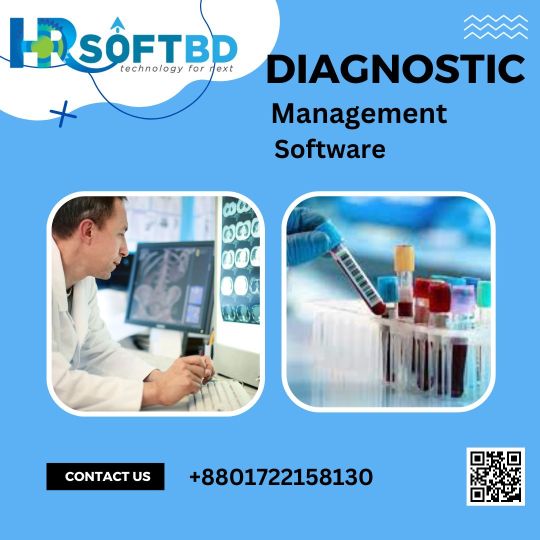
Diagnostic Management Software by HRsoft Bangladesh
Key Features- eamlessly integrates with existing hospital information systems, Real-time Data Insights, Advanced Analytics and Reporting, Data Security and Compliance, User-friendly Interface
#DiagnosticSoftware#HealthcareIT#LabManagement#MedicalSoftware#HealthTech#DiagnosticsAutomation#PatientManagement#MedicalLabSoftware#DigitalDiagnostics#ClinicalSoftware
0 notes
Text
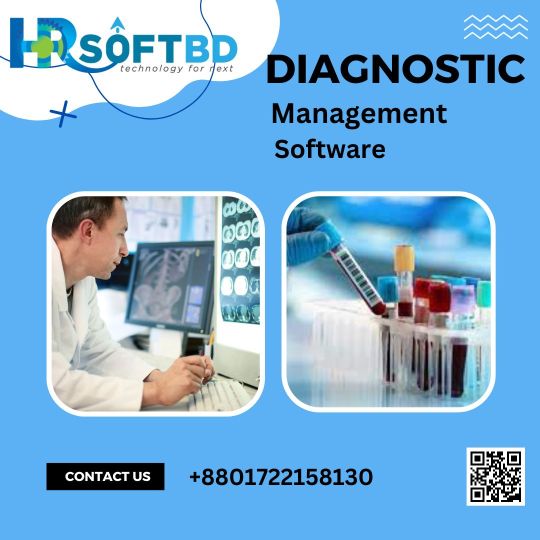
Diagnostic Management Software by @hrsoftbd https://hrsoftbd.com/servi.../diagnostic-management-software Streamlining diagnostic workflows and automating task, Improved Accuracy and Precision, Cost Savings, Empowered Collaboration, Future-Proofing Healthcare system.
#DiagnosticSoftware#HealthcareIT#LabManagement#MedicalSoftware#HealthTech#DiagnosticsAutomation#PatientManagement#MedicalLabSoftware#DigitalDiagnostics#ClinicalSoftware
0 notes
Text
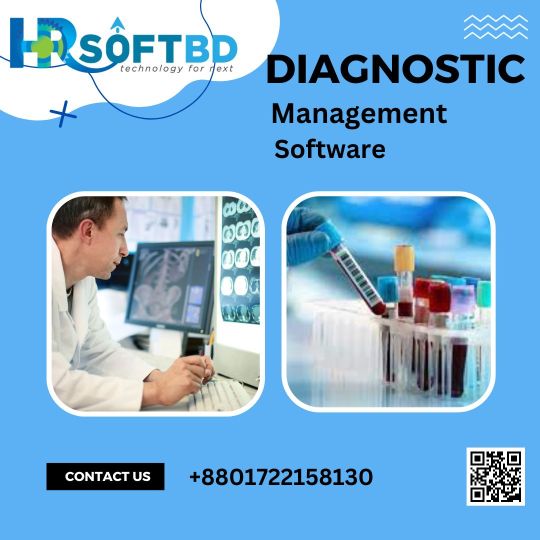
Diagnostic Management Software by @hrsoftbd
It has seamlessly integrates with existing hospital information systems, Real-time Data Insights, Advanced Analytics and Reporting, Data Security and Compliance, User-friendly Interface.
#DiagnosticSoftware#HealthcareIT#LabManagement#MedicalSoftware#HealthTech#DiagnosticsAutomation#PatientManagement#MedicalLabSoftware#DigitalDiagnostics#ClinicalSoftware#ClinicalSoftware"
0 notes
Text
Streamline your diagnostics with Hospital Laboratory Management System by patienterp!Boost accuracy and efficiency with our powerful Diagnostic Lab Management Software – smart design, smarter labs.
E-Mail: [email protected]
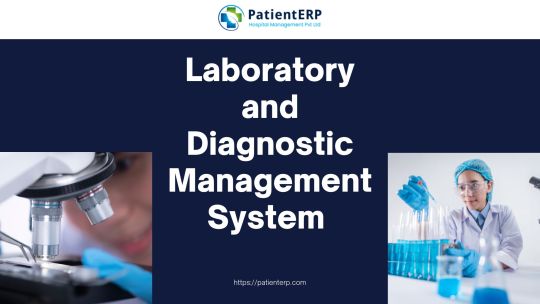
1 note
·
View note
Text
Boost Hospital Efficiency with Grapes IDMR – A Smarter Way to Manage Healthcare
Managing a healthcare facility is no small feat. With multiple departments, continuous patient flow, and high-stakes decisions, hospitals need a reliable solution to keep everything running smoothly. Enter Grapes IDMR – a smart hospital management software developed by Grapes Innovative Solutions to simplify and strengthen hospital operations.
This all-in-one digital platform is designed to support hospitals in managing everything from patient records and doctor scheduling to lab diagnostics and pharmacy workflows. With Grapes IDMR, administrative burdens shrink, data becomes more accessible, and departments work in harmony. What makes this software especially valuable is its comprehensive nature. It doesn't just focus on one area it connects all the moving parts of a hospital, ensuring your team can collaborate effectively and provide timely care to every patient.
Here’s how Grapes IDMR brings value:
Centralized control over inpatient and outpatient data
Automated billing, discharge summaries, and appointment tracking
Secure, cloud-enabled electronic health records (EHR)
Custom modules for pharmacy, lab, HR, and inventory
Real-time dashboards for operational insights
Whether you’re upgrading from outdated tools or going digital for the first time, Grapes IDMR adapts to your hospital’s specific needs. It’s not just software it’s a long-term partner in your hospital’s growth journey. Backed by the expertise of Grapes Innovative Solutions, this hospital management software has already empowered numerous hospitals to improve service quality, streamline processes, and increase transparency in administration.
Visit for more: Grapes innovative solutions
#HospitalManagementSoftware#GrapesIDMR#HealthTech#MedicalIT#DigitalHospital#EHRSoftware#PatientRecords#HospitalAutomation#InpatientManagement#OutpatientManagement#HealthcareSoftware#ClinicalEfficiency#HospitalAdminTools#PharmacyIntegration#LabManagement#SmartHealthcare#MedicalSolutions#OPManagement#IPManagement#HospitalWorkflow#PaperlessHealthcare#SecureHealthRecords#GrapesInnovativeSolutions#HealthcareSystemSoftware#HospitalSolutions
0 notes
Text
Delayed Lab Results? Check the Timeline Instantly with Grapes BSA Pro!
In the fast-paced world of healthcare, delays in lab results can slow down diagnosis and treatment, impacting patient care. But what if you could track the exact journey of every lab test in real-time? With Grapes BSA PRO’s Lab Result Timeline feature, hospitals can now experience a transparent, streamlined, and efficient process for managing lab reports.
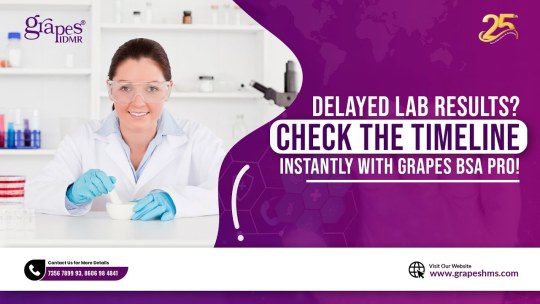
What is the Lab Result Timeline Feature?
The Lab Result Timeline in Grapes BSA PRO is a revolutionary tool designed to eliminate the common frustrations of delayed lab results. This feature allows doctors and nurses to track a test’s journey — from the moment it is recommended to its final approval. No more confusion, no more delays, just clear, real-time data at your fingertips.
youtube
How Does the Lab Result Timeline Work?
When you open a patient’s lab result, a timeline icon is visible at the top-right of the result section. By tapping on this icon, you unlock a detailed step-by-step timeline, including:
Test Recommendation – When the doctor orders the lab test.
Bill Generation – Time when the test is billed to the patient.
Sample Collection – When the sample is taken from the patient.
Sample Received at Lab – The exact time the sample reaches the laboratory.
Result Generation – The moment the lab test results are ready.
Verification & Confirmation – The lab's internal verification process.
Investigation Completion – The final approval of the lab result.
This timeline gives unparalleled visibility into each stage of the lab testing process, ensuring no step is overlooked.
Why is the Lab Result Timeline Important?
In hospitals, time is critical. When lab results are delayed, it can create confusion, disrupt patient care, and slow down clinical decision-making. The Lab Result Timeline feature in Grapes BSA PRO provides:
Clear Accountability: If a test result is delayed, the timeline helps pinpoint where the issue lies – collection, lab processing, or approval.
Improved Efficiency: Doctors and nurses no longer need to manually track lab reports, reducing unnecessary follow-ups and waiting time.
Better Patient Care: Faster access to lab results means quicker diagnoses and timely treatment.
Enhanced Hospital Workflow: Hospitals can streamline operations by identifying and resolving bottlenecks in lab result processing.
With this feature, every second saved can contribute to better healthcare outcomes.
How to Access the Lab Result Timeline?
Using the Lab Result Timeline feature in Grapes BSA PRO is simple and user-friendly. Follow these steps:
Go to the Patient Dashboard – Navigate to the Lab Result Menu.
Select a Lab Result – Tap on any test result to view details.
Click the Timeline Icon – This unlocks the complete step-by-step timeline of the test.
With just a few taps, healthcare professionals can access valuable insights that enhance clinical decision-making and hospital efficiency.
Why Choose Grapes BSA PRO?
Grapes BSA PRO is designed with hospital efficiency in mind. This intelligent bedside assistant brings real-time tracking, automation, and seamless integration into healthcare workflows. Here’s why hospitals trust Grapes BSA PRO:
AI-Powered Insights – Enhances decision-making with data-driven solutions.
Voice-to-Text Assistance – Reduces documentation workload for healthcare professionals.
Graphical Reports – Offers easy visualization of patient data.
Personalized Alerts – Keeps medical teams updated in real-time.
Integration with Grapes IDMR – A complete hospital management system for seamless data exchange.
A Small Icon with a Big Impact
A simple timeline icon in Grapes BSA PRO is transforming how hospitals manage lab results. With this feature, hospitals can reduce wait times, improve workflow efficiency, and provide better patient care.
Want to see the Lab Result Timeline feature in action? Watch our full video demonstration and discover how this smart solution is revolutionizing hospital operations!
Stay Updated with Smart Healthcare Solutions
If you found this information valuable, make sure to like, share, and subscribe to our channel for more updates on smart healthcare innovations and enterprise solutions. Stay ahead in healthcare technology with Grapes BSA PRO!
👉 Experience the power of Grapes BSA PRO today! 📞 Call us at 7510330000 🌐 Visit : Best Hospital Management Software - to schedule a free demo now!
#HospitalManagementSoftware#HealthcareTechnology#LabResults#ClinicalEfficiency#DoctorTools#PatientCare#GrapesBSAPRO#MedicalInnovation#HealthTech#MedicalSoftware#HealthcareIT#LabReportTracking#SmartHospitals#AIinHealthcare#EHR#GrapesIDMR#ElectronicMedicalRecords#NursingTools#SmartHealthcare#MedicalDiagnostics#LabManagement#TimelyDiagnosis#AutomationInHealthcare#HealthcareInnovation#BetterPatientCare#FasterLabResults#Youtube
0 notes
Text
Maximizing Efficiency: Integrating Hospital Software with IoT Devices
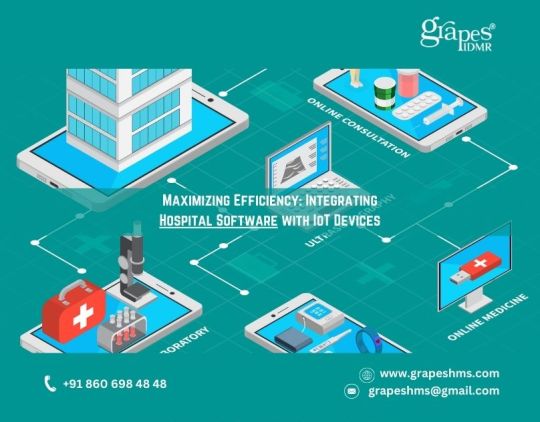
In today's rapidly evolving healthcare landscape, the integration of hospital software with Internet of Things (IoT) devices is revolutionizing patient care delivery, operational efficiency, and overall healthcare outcomes. By harnessing the power of IoT technology, healthcare organizations can maximize efficiency, streamline workflows, and enhance patient experiences. Let's explore the benefits and implications of integrating hospital software with IoT devices.
Real-Time Patient Monitoring:
Hospital software integrated with IoT devices enables real-time monitoring of patient vital signs, activities, and health metrics.
IoT sensors embedded in medical devices, wearables, and patient monitoring systems capture data continuously and transmit it directly to the hospital software platform.
Healthcare providers gain instant access to critical patient information, allowing for timely interventions, proactive care management, and improved clinical outcomes.
Enhanced Asset Management:
IoT-enabled hospital software facilitates the tracking and management of medical equipment, supplies, and assets within healthcare facilities.
RFID tags, sensors, and beacons embedded in equipment and inventory items enable automated asset tracking, location monitoring, and inventory management.
Healthcare organizations can optimize asset utilization, reduce equipment downtime, and minimize inventory stockouts by leveraging real-time data insights provided by IoT-integrated hospital software.
Improved Facility Operations:
Hospital software integrated with IoT devices streamlines facility operations and maintenance processes, leading to increased efficiency and cost savings.
IoT sensors deployed throughout healthcare facilities monitor environmental conditions, energy usage, and equipment performance in real-time.
Facility managers can proactively identify maintenance issues, optimize energy consumption, and ensure regulatory compliance by leveraging data-driven insights from IoT-enabled hospital software.
Remote Patient Care and Telemedicine:
IoT-integrated hospital software enables remote patient monitoring and telemedicine consultations, expanding access to healthcare services and improving patient engagement.
IoT-enabled wearable devices, home monitoring kits, and telehealth platforms facilitate virtual consultations, remote diagnostics, and medication adherence monitoring.
Healthcare providers can deliver personalized care plans, monitor patients' progress remotely, and intervene as needed, resulting in better health outcomes and reduced hospital readmissions.
Predictive Analytics and Preventive Care:
Hospital software integrated with IoT devices leverages data analytics and machine learning algorithms to predict and prevent adverse events and medical complications.
IoT sensors capture and analyze vast amounts of patient data, including physiological parameters, lifestyle factors, and environmental triggers.
Healthcare organizations can identify patterns, trends, and risk factors early on, enabling proactive interventions, personalized treatment plans, and preventive care strategies to improve patient health and wellness.
In conclusion, integrating hospital software with IoT devices offers tremendous potential for maximizing efficiency, improving patient care, and transforming healthcare delivery. By harnessing real-time data insights from IoT-enabled devices, healthcare organizations can enhance clinical workflows, optimize resource utilization, and deliver more personalized and proactive care to patients. Embracing IoT integration in hospital software is not just a technological advancement but a strategic imperative for driving innovation and achieving excellence in today's dynamic healthcare environment.
#HMS#hmssoftware#hospitalsoftware#HealthcareManagementsystem#Healthcare#HospitalManagementSystem#HospitalManagement#BSA#GrapesHMS#MIS#EMR#GrapesIDMR#Grapes#HealthcareManagementSystemsoftware#Software#SoftwareSolution#Doctor#PatientRegistration#IPDManagement#OPDManagement#IDMR#Labmanagement#NursingStation#Dietmanagement#MRDManagement#BloodBank#Linenmanagement#HRManagement#Pharmacy#Radiology
0 notes
Text
A Comprehensive Comparison of Leading HMS Software Solutions
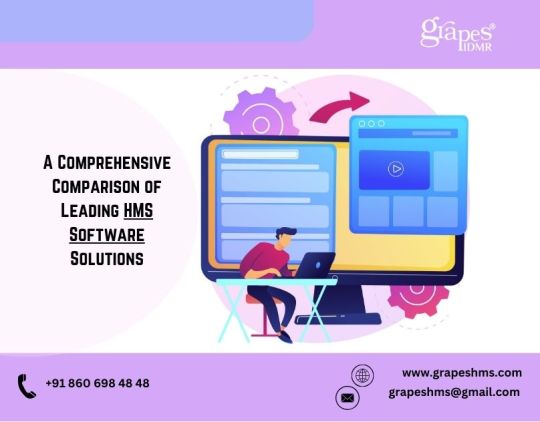
Choosing the best hospital management software (HMS software) for your healthcare organization is a crucial decision that requires careful evaluation of various factors. To assist you in this process, we have conducted a comprehensive comparison of leading HMS software solutions, highlighting their key features, functionalities, and benefits.
Epic Systems Corporation
Features: Epic offers a comprehensive suite of HMS software solutions, including electronic health records (EHR), patient scheduling, billing, and clinical decision support.
Functionality: Epic's software is highly customizable and scalable, catering to the needs of small clinics and large healthcare systems.
Benefits: Epic's HMS software is renowned for its interoperability, enabling seamless integration with other healthcare systems and facilitating collaborative care delivery.
Cerner Corporation:
Features: Cerner's HMS Software encompasses EHR, revenue cycle management, population health management, and telehealth capabilities.
Functionality: Cerner's software is known for its robust clinical decision support tools, data analytics capabilities, and patient engagement solutions.
Benefits: Cerner's HMS Software streamlines workflows, improves clinical outcomes, and enhances patient satisfaction through personalized care delivery and proactive population health management.
Allscripts Healthcare Solutions:
Features: Allscripts offers an integrated suite of HMS software solutions, including EHR, practice management, revenue cycle management, and patient engagement tools.
Functionality: Allscripts' software prioritizes interoperability, enabling seamless data exchange between disparate systems and enhancing care coordination across healthcare settings.
Benefits: Allscripts' HMS Software empowers healthcare organizations to deliver high-quality, patient-centered care, improve operational efficiency, and achieve better clinical and financial outcomes.
Meditech:
Features: Meditech provides a comprehensive suite of HMS software solutions, including EHR, patient registration, scheduling, billing, and clinical decision support.
Functionality: Meditech's software is designed to streamline clinical workflows, enhance patient safety, and optimize revenue cycle management through integrated, user-friendly interfaces.
Benefits: Meditech's HMS Software offers scalability, flexibility, and interoperability, enabling healthcare organizations to adapt to changing needs, improve care coordination, and achieve meaningful use of health IT.
NextGen Healthcare:
Features: NextGen offers a suite of HMS software solutions, including EHR, practice management, revenue cycle management, and population health management.
Functionality: NextGen's software prioritizes usability, interoperability, and data analytics, empowering healthcare organizations to drive better clinical and financial outcomes.
Benefits: NextGen's HMS Software enables healthcare organizations to optimize workflows, improve care quality, and enhance patient engagement through personalized, data-driven care delivery.
In conclusion, each of these leading HMS software solutions offers unique features, functionalities, and benefits to meet the diverse needs of healthcare organizations. When choosing the best HMS software for your business, consider factors such as interoperability, scalability, usability, and alignment with your organization's strategic objectives. By conducting a comprehensive comparison and selecting the HMS software solution that best fits your organization's needs, you can drive innovation, improve patient care, and achieve success in today's dynamic healthcare landscape.
#HMS#hmssoftware#hospitalsoftware#HealthcareManagementsystem#Healthcare#HospitalManagementSystem#HospitalManagement#BSA#GrapesHMS#MIS#EMR#GrapesIDMR#Grapes#HealthcareManagementSystemsoftware#Software#SoftwareSolution#Doctor#PatientRegistration#IPDManagement#OPDManagement#IDMR#Labmanagement#NursingStation#Dietmanagement#MRDManagement#BloodBank#Linenmanagement#HRManagement#Pharmacy#Radiology
0 notes
Text
Comparing Pathology Lab Software Options in Patna!
Choose the best pathology lab software in Patna! Compare features, prices, and user reviews to streamline your diagnostics. Find your perfect fit here!
0 notes
Text
What is the purpose of the lab management module in the hospital?
The primary purpose of the lab management module in the hospital's Best Healthcare Management System is to effectively oversee and optimize the operations within the laboratory. This module serves several critical purposes:
Efficient Workflow Management: It aims to streamline and automate various laboratory processes, reducing manual errors, and enhancing the overall efficiency of the lab. This includes managing sample processing, tracking, and result reporting.
Improved Accuracy and Quality: The module ensures standardized procedures and protocols to minimize errors, leading to more accurate test results and maintaining high-quality standards in laboratory testing.
Resource Optimization: It helps manage and optimize laboratory resources, such as inventory, equipment, and staff, leading to better resource utilization, reduced wastage, and improved productivity.
Regulatory Compliance: Ensuring adherence to regulatory standards and quality control measures is a fundamental purpose. The system assists in meeting healthcare regulations and compliance requirements.
Integration and Data Sharing: The module aims to integrate seamlessly with other hospital management systems, facilitating easy data sharing and enabling collaboration and communication among various departments within the healthcare system.
Enhanced Patient Care: The ultimate purpose is to improve patient care by providing timely and accurate test results, enabling healthcare professionals to make informed decisions and deliver better care to patients.
Data Analysis and Reporting: Generating comprehensive reports and utilizing data analytics to identify trends and areas for improvement is a core purpose. This assists in strategic decision-making and optimizing operational efficiency.
Security and Confidentiality: Safeguarding sensitive patient data is a critical purpose, ensuring the system is equipped with robust security measures to maintain confidentiality and comply with data protection regulations.
Adaptability and Scalability: The module is designed to be adaptable and scalable, serving the purpose of meeting the evolving needs of the hospital and allowing for system growth and adjustments as necessary.
Continuous Improvement: Supporting a culture of continuous improvement is a key purpose, focusing on identifying areas for enhancement in laboratory processes, technology, and overall healthcare service delivery.
In essence, the lab management module within the Best Healthcare Management System serves multiple purposes, all aimed at ensuring efficient, accurate, and high-quality laboratory operations, ultimately contributing to superior patient care and the overall success of the healthcare institution.
#HMS#HealthcareManagementsystem#Healthcare#HospitalManagementSystem#HospitalManagement#BSA#GrapesHMS#MIS#EMR#GrapesIDMR#Grapes#HealthcareManagementSystemsoftware#Software#SoftwareSolution#Doctor#PatientRegistration#IPDManagement#OPDManagement#IDMR#Labmanagement#NursingStation#Dietmanagement#MRDManagement#BloodBank#Linenmanagement#HRManagement#Pharmacy#Radiology
0 notes
Text
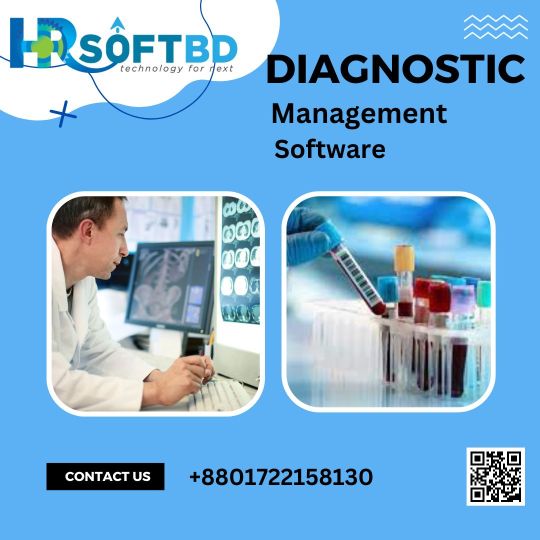
Diagnostic Management Software by HRsoft Bangladesh
Key Features- eamlessly integrates with existing hospital information systems, Real-time Data Insights, Advanced Analytics and Reporting, Data Security and Compliance, User-friendly Interface
#DiagnosticSoftware#HealthcareIT#LabManagement#MedicalSoftware#HealthTech#DiagnosticsAutomation#PatientManagement#MedicalLabSoftware#DigitalDiagnostics#ClinicalSoftware
0 notes
Text
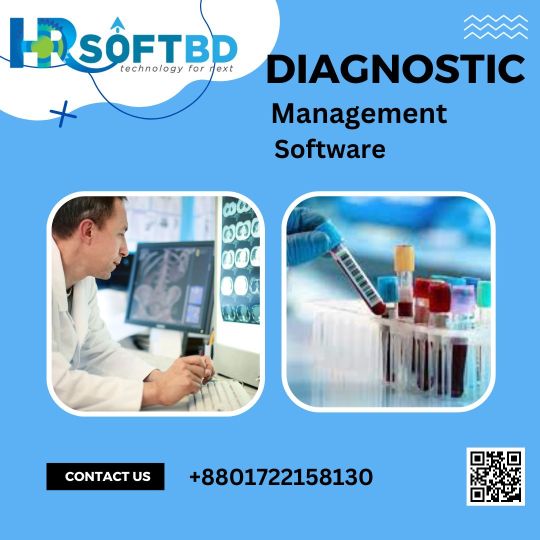
Diagnostic Management Software by HRsoft Bangladesh https://hrsoftbd.com/servi.../diagnostic-management-software eamlessly integrates with existing hospital information systems, Real-time Data Insights, Advanced Analytics and Reporting, Data Security and Compliance, User-friendly Interface.
#DiagnosticSoftware#HealthcareIT#LabManagement#MedicalSoftware#HealthTech#DiagnosticsAutomation#PatientManagement#MedicalLabSoftware#DigitalDiagnostics#ClinicalSoftware
0 notes
Text
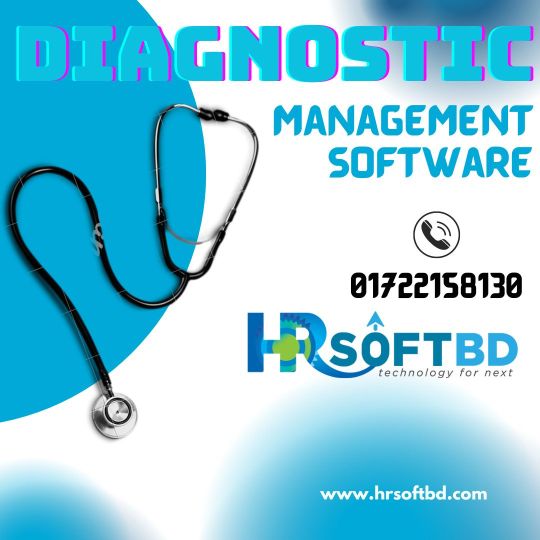
Diagnostic Management Software by @hrsoftbd
It has seamlessly integrates with existing hospital information systems, Real-time Data Insights, Advanced Analytics and Reporting, Data Security and Compliance, User-friendly Interface.
#DiagnosticSoftware#HealthcareIT#LabManagement#MedicalSoftware#HealthTech#DiagnosticsAutomation#PatientManagement#MedicalLabSoftware#DigitalDiagnostics#ClinicalSoftware#ClinicalSoftware"
0 notes
Text
Unlocking the Future of Laboratories with LIMS Software Development
Hey there, Tumblr community! Today, I want to dive into the fascinating world of Laboratory Information Management System (LIMS) software development and shed some light on how it's revolutionizing the way laboratories operate. If you're intrigued by the possibilities of LIMS or considering developing a LIMS system, I've got the perfect resource for you.
What is LIMS? Laboratory Information Management System, or LIMS, is a sophisticated software solution that helps labs manage samples, data, and laboratory operations more efficiently. It simplifies the complexities of data storage, retrieval, and analysis while ensuring compliance with industry regulations.
Why LIMS Matters:
Data Management: LIMS allows for the secure and organized storage of vast amounts of scientific data, ensuring it remains accessible and traceable.
Workflow Optimization: Streamline lab processes, from sample tracking to report generation, enhancing overall productivity.
Quality Assurance: LIMS systems enforce strict quality control measures, reducing errors and ensuring reliable results.
Compliance: Stay compliant with industry and regulatory standards, ensuring the integrity of your research.
Now, if you're interested in diving deeper into the world of LIMS and learning how to build a LIMS system in five simple steps, head over to GloriumTech's insightful guide. This article provides a step-by-step breakdown of the LIMS development process, making it accessible for both newcomers and experienced professionals.
Developing a LIMS system may seem like a daunting task, but with the right guidance and resources, you can unlock the potential for more efficient and precise scientific research. So, whether you're in the field of healthcare, research, or any other industry that relies on laboratories, consider the immense benefits that LIMS software development can bring.
Share your thoughts and experiences with LIMS software in the comments below. Let's explore the limitless possibilities of LIMS together!
0 notes
Video
youtube
#adwingtechnologies #SmartReport #PathologySoftware #OfflineLabSoftware
Welcome to the future of lab management! In this video, we demonstrate how Smart Report simplifies pathology reporting with speed, accuracy, and customization.
✅ Key Features Covered in This Demo:
Accurate test reports for Biochemistry, Serology, Widal, HB, TLC, DLC, CBC, X-ray & more
Offline functionality—runs on Windows without internet
Customizable report templates with age/gender-specific reference ranges
QR-coded reports and WhatsApp sharing for instant delivery
Multi-user and multi-branch support for scalable lab operations
Secure data backup and encryption
Automated billing, invoicing, and stock management
Android compatibility for mobile access
📲 Why Choose Smart Report? Whether you're managing a small clinic or a large diagnostic center, Smart Report by Adwing Technologies is your all-in-one solution for efficient, secure, and smart pathology reporting.
📞 Book Your Free Demo Today 🌐 Visit: adwingtechnologies.com 📱 Call: +91-9044705123 | +91-7007122137
🔔 Don’t forget to like, subscribe, and hit the bell icon for more tutorials and updates!
#SmartReport #PathologySoftware #AdwingTechnologies #LabManagement #MedicalSoftware #OfflineLabSoftware #QRReports #WhatsAppReports #DiagnosticTools
0 notes